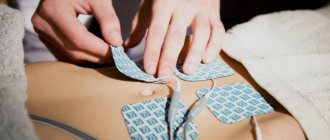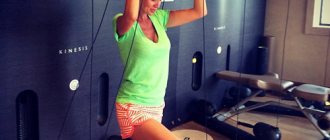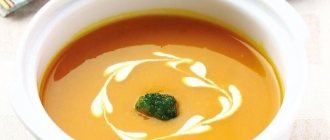A healthy lifestyle has long been in fashion: people try to eat right, play sports, and not have bad habits. All this requires enough time and effort. However, there are things that elude our eyes that actually have a very beneficial effect on the body.
We are talking about a contrast shower - one of the types of hardening. Everything seems quite simple - you alternately pour hot and cold water over your body, is there really any benefit from this? In this material you will learn everything about the contrast shower: a description of the procedure, indications and contraindications, beneficial properties, how to properly take a contrast shower, etc.
Description of the procedure
A contrast shower is a hygienic procedure, the essence of which is to pour cold and hot water over the body, for short periods of time, in turn.
By alternately influencing the body with water of different temperatures, you strengthen the vascular system, thereby improving blood circulation. Tissues and organs receive a signal, beginning to actively receive nutrients.
Improving immunity occurs due to the elimination of microorganisms: the body temperature is higher than the temperature of cool tap water, so the body reacts to droplets getting on the skin. The reaction occurs in the form of a rise in body temperature - the microbes present inside die. Health improves, immunity strengthens.
Fighting varicose veins and cellulite
Today, a contrast shower is considered one of the most effective remedies for varicose veins. With its help, you can restore the tone of blood vessels, as well as get rid of congestion in the circulatory system. Particular attention must be paid to the leg area and the following rule must be observed: the water flow should not be hotter than 45 °C. If the temperature is allowed to rise, venous tone will worsen. For medicinal purposes, a shower should be taken an hour before breakfast.
The duration of cycles should not exceed 15 seconds. The procedure must be carried out within 15 minutes. The jet should be directed in the direction of the diseased veins. It is also recommended to practice circular movements in the problem area.
A shower with a contrasting temperature will help get rid of the orange peel on the thighs, which is called cellulite. To do this, you need to start the procedure by supplying warm water. After this, the temperature gradually increases to 45 °C. After reaching such indicators, a cold stream is abruptly supplied, but not an icy one.
You should stay under cold water for no longer than five seconds. The duration of stay under hot water is 10-15 seconds. With a contrast shower, the water flows should be directed downward. If discomfort occurs during the procedure, it means that the temperature was chosen incorrectly and the cycle must be ended. After the shower, you should rub your body and stay at home for about 30 minutes to rest and recover.
How to take a contrast shower correctly. My tips
Beneficial properties of a contrast shower
As mentioned above, a simple procedure is fraught with many useful properties.
- The general condition of the body improves, the immune system is strengthened;
- Beneficial effects on the vascular system of the body, blood circulation improves;
- The number of colds decreases due to training in body thermoregulation;
- Blood pressure levels are normalized;
- Metabolism accelerates, due to which you can speed up weight loss;
- A contrast shower stimulates the functioning of brain cells, a person’s mood improves, he feels fresh and energized;
- Helps fight insomnia, depression and other psychological disorders;
- The skin becomes more elastic;
- In men, testosterone levels increase and potency improves;
- Increases stress resistance;
- Sweating decreases;
Contraindications to contrast shower
Contrast showers, like any procedure, have their contraindications. Before starting use, it is better to consult with a medical specialist who will tell you for which pathologies and chronic diseases a contrast shower is contraindicated. The doctor will also give the necessary recommendations for use.
Contraindications to contrast shower:
- Thrombophlebitis;
- Diseases of the cardiovascular system;
- Hypertonic disease;
- Increased body temperature (37 and above);
- ARVI diseases;
- Cuts, open wounds;
- The course of pregnancy with complications;
- Blood diseases;
- Sore throat, cystitis;
- Oncology;
- Chronic diseases;
You can start hardening with a contrast shower only after all the sores have been cured and you have consulted a doctor again, who will give permission.
What are the benefits of a contrast shower?
Improved blood circulation
Under the influence of hot water, blood vessels expand; cold water does the opposite - they narrow. As a result, blood circulation improves, including microcirculation. Organs and tissues are better supplied with oxygen, metabolic processes improve.
Thermoregulation
Temperature contrast is excellent training for both blood vessels and thermal adaptation mechanisms. The body's thermoregulation gradually improves, a person can better tolerate heat or cold, quickly adapts to any weather, and in case of overheating or hypothermia, the body can easily cope with their consequences.
Hardening
With a sharp change in temperature, the body’s defenses are activated; with regular procedures, a person is able to resist colds.
Effect on skin and weight
Alternate heating and cooling of problem areas of the skin has an anti-cellulite effect, and the skin takes on a healthy and toned appearance. In the fight against extra pounds, a contrast shower can also provide excellent support. When there are sudden changes in temperature, the water jet helps fight fat deposits, while the skin is tightened naturally.
Nervous system
Due to the alternate irritation of skin receptors, the functioning of the nervous system is stimulated. In addition to the emotional state, sleep improves, apathy disappears, people suffering, for example, from chronic fatigue syndrome, which is so widespread today, feel much better.
Vascular system
Contrast showers are very effective for varicose veins: both as a method of prevention and as a remedy. Alternating alternation of cool and warm water has a beneficial effect on the vascular walls, increasing their tone, tissue elasticity is restored, and muscle stimulation occurs. If the procedure is combined with the use of drugs for varicose veins prescribed by a doctor, the effect of treatment increases. But caution should be exercised, since a contrast shower, effective for varicose veins, is contraindicated for thrombophlebitis - an inflammatory process in the venous wall with the formation of a blood clot. Therefore, before starting the procedures, you should consult a specialist.
Rules for taking a contrast shower
The greatest effect from the procedure can be achieved if everything is done correctly.
General rules for a contrast shower:
- You should not take a contrast shower immediately after training, when the body is warmed up. Let it cool slightly;
- It is better not to shower 2 hours before bedtime, as it will be difficult to fall asleep, and showering is also contraindicated in the first 30 minutes after waking up;
- Do not shower on a full stomach immediately after eating;
- Don't wet your head;
- If you can’t pour over your whole body at once, start with your feet;
- The water jets should hit strongly to massage areas of the body;
- The difference between the temperatures of hot and cold water should be very noticeable, but should not become an unpleasant surprise for the body;
How to get started:
- To begin, stand under warm running water for about 5 minutes;
- Then change the temperature and stand for about 1 minute under slightly cool, but not ice-cold water;
- Now stand under hot water for a minute, at a temperature of about 40 degrees;
- Alternate cold and hot contrast 3 times;
- After the procedure, warm your body by rubbing it with a towel.
Contrast shower: harm and contraindications
Contrast showers, like other active water procedures, have a number of contraindications, so under certain circumstances they can be harmful to your health. Who should not take a contrast shower?
If you feel dizzy during the process, stop the procedure. You should avoid a contrast shower if you have recently been ill or have had surgery, as your immune system is still weakened.
It is not advisable to take a contrast shower during periods of exacerbation of any disease, as well as during menstruation and pregnancy. There are several diseases for which this water procedure is contraindicated:
- cardiovascular diseases;
- tumor diseases;
- cold;
- skin diseases;
- diseases of the hematopoietic system;
- hypertension.
If you suffer from any chronic illness, ask your doctor for advice on how such stress will affect your health.
In old age, it is better not to start hardening, because the possible harm is greater than the possible benefit. But you can always go in for sports, it helps you stay healthy at any age.
Methods for taking a contrast shower
Method for beginners
- Once warmed up, turn on the cold water. Douse yourself for 5 seconds. The temperature of the cold water must “burn” the body so that the body releases heat.
- Turn on the hot water and pour over your body for 10 seconds until you are completely warm.
- Turn the water back on from the cold tap and repeat the procedure from step 1.
- Alternately turn on the hot and cold showers, 3 times each.
- It is better to finish the procedure with hot water to warm the body.
- Rub your body thoroughly with a towel.
As you get used to it, increase the time of cold and hot showers proportionally, in a ratio of 1 to 2.
Second method
- Warm your body with hot water, then step away from the streams and switch the mixer to cold water;
- Wait until cold water flows from the tap, direct the stream of water towards yourself and wait for 10-15 seconds;
- Step away from the running water again, switch the tap to hot water, wait until it warms up and stand under the running water for 20-30 seconds;
- Alternate 3 to 5 times;
- Don't forget to rub with a towel at the end of the procedure.
Impact on the body
People interested in what a contrast shower is and how to do it at home often think about the mechanism of the procedure’s effect on the body. Very often it is classified as a restorative and preventive measure that is useful for representatives of different age groups. Warm water flows help stimulate blood flow, as well as cleanse the vascular system and body of toxins and various pathogenic microorganisms.
To get the most out of your shower, keep in mind that the ratio of hot to cold water should be 3:1. Under the influence of cool water flows, blood circulation increases, which helps to warm blood vessels and protect internal organs. Thanks to the cyclical nature of the shower, this effect is repeated several times during one procedure. As a result, a person becomes hardened and stops getting sick often.
Where to start a contrast shower and what intervals to follow is an ambiguous question. However, before starting hardening, you should definitely consult with a specialist to eliminate possible health risks.
Cold and hot shower. How to do it right
In what cases can a contrast shower be harmful?
Despite the undeniable benefits of contrasting water procedures, they also have their contraindications, and if carried out incorrectly, they can cause harm.
The main mistake of all those who begin to harden is considered to be dousing them with cool water, because many beginners are afraid to switch to colder water over time. Water at a temperature of 20 degrees is not healing; this is the kind of contrast shower that should be carried out at first.
Therefore, if you do not want to get a bunch of colds and a weakened immune system, after a few weeks of adaptation of the body, switch to colder water. Don’t be afraid, in a short period of time such water will not have time to supercool the body; on the contrary, it will be the lever for triggering the body’s defense mechanisms.
The following diseases are contraindications for contrast showers:
- Malignant neoplasms;
- Thrombophlebitis in acute form;
- Spasm of cerebral vessels;
- Hypertension;
- acute respiratory infections and acute respiratory viral infections;
- Cystitis;
- Critical days for women;
- Pregnancy;
- Heat;
- Allergy to cold;
- Diseases of the blood and cardiovascular system.
If you have any doubts, be sure to consult a doctor, perhaps he will advise you on how to carry out this procedure in a more gentle way, so as not to provoke long-standing chronic diseases.
With VSD
It turns out that a contrast shower alleviates the symptoms of VSD. Since I myself suffer from this disease, I was interested in learning all the nuances of taking a contrast shower.
The main recommendations of doctors here are as follows:
- You should not shower immediately after waking up and before going to bed.
- For several minutes you need to warm up your body well, standing under moderately hot water.
- Before changing to cold water, you should first sprinkle it on your face so as not to strain your heart.
- You need to stand under hot water a little longer than under cold water.
- Taking a shower is limited to 3 temperature changes with a maximum difference of 18 degrees.
- Ice water should only be turned on at the end of the procedure, literally for 3 seconds.
- A contrast shower should be taken every day for 1 month, and then take a 15-day break. And then you should carry out this procedure 2 times a week.
- People with low blood pressure should not use ice water, otherwise vasospasm may occur.
- If you have high blood pressure, it is better not to take risks and refuse this procedure. With this diagnosis, the walls of the blood vessels are subjected to greater stress; when switching to cold water, they will sharply narrow and a spasm will occur.
How to start taking a contrast shower?
Carrying out such procedures from scratch will always be uncomfortable. Therefore, be prepared in advance that it will take you from a couple of weeks to 1 month to get used to it. Worry in advance about the serviceability of the water supply, because you will have to change the water from hot to cold several times and you need to do this very quickly.
On the Internet, I also came across a Russian development of an automatic contrast shower, in which you need to set the necessary settings in advance and enjoy the dousing procedure in comfortable conditions. Convenient, isn't it?
The first 2 weeks you need to adapt, so proceed according to the following scheme:
- Warm yourself under warm water for 60 seconds;
- Stay under cool water for 30 seconds.
For the third week, follow this sequence:
- Stand under warm water for 60 seconds;
- 30 seconds under cool;
- 30 seconds again under warm;
- 30 seconds again under cool;
- 30 seconds - warm shower;
- 30 seconds - cool shower.
And so you need to withstand 3.5 minutes, try to make the temperature difference a little more noticeable each time, the time for one mode can be increased to 90 seconds.
After a month, you should increase the duration of the procedure to 7 minutes, and the difference between the temperatures should be at least 20 degrees. The ideal option would be to pour hot water at 40-42 degrees, and cold water at 15-17.
Did you feel a boost of energy and a good emotional state? So you are doing everything right. If you are constantly freezing, then re-read all the recommendations again, or consult a doctor; perhaps you have contraindications that you are not even aware of.









